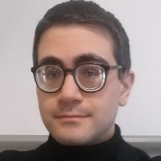Nonlinear Optical Properties and Multiphoton Spectroscopies of Inorganic Molecules, Crystal and Clusters
A special issue of Inorganics (ISSN 2304-6740). This special issue belongs to the section "Inorganic Solid-State Chemistry".
Deadline for manuscript submissions: closed (30 November 2023) | Viewed by 242
Special Issue Editor
Interests: nonlinear optics; spectroscopies; theoretical and quantum chemistry; weak interactions; topology
Special Issue Information
Dear Colleagues,
We are living in an age of the human history dominated by communication. The role of electrons in the information technology of the XX century may be soon (and in part has already been) replaced by photons in the III millennium. Over the years, it has been consolidated that photonics, using photons instead of electrons to acquire, store, process, and transmit information, may do a better job than electronics, in terms of operational speed, bandwidth, signal transmission, number parallel communication channels per surface area, etc. Nonlinear optics is one of the cornerstones of photonics. Furthermore, nonlinear optical materials have found outstanding applications in fields other than photonics, such as bio-imaging, photodynamic therapy, sensor manufacture, smart materials, and micro- and nanofabrication. So far, the majority of studies of nonlinear optics have primarily been focused on organic compounds and materials.
In this Special Issue, we wish to “bring balance to the Force” and show the high potentialities that inorganic compounds and materials—up to now, rather neglected—may have in nonlinear optics; contributions in theory, computation, synthesis, characterization and applications will all be welcome.
Prof. Dr. Enrico Benassi
Guest Editor
Manuscript Submission Information
Manuscripts should be submitted online at www.mdpi.com by registering and logging in to this website. Once you are registered, click here to go to the submission form. Manuscripts can be submitted until the deadline. All submissions that pass pre-check are peer-reviewed. Accepted papers will be published continuously in the journal (as soon as accepted) and will be listed together on the special issue website. Research articles, review articles as well as short communications are invited. For planned papers, a title and short abstract (about 100 words) can be sent to the Editorial Office for announcement on this website.
Submitted manuscripts should not have been published previously, nor be under consideration for publication elsewhere (except conference proceedings papers). All manuscripts are thoroughly refereed through a single-blind peer-review process. A guide for authors and other relevant information for submission of manuscripts is available on the Instructions for Authors page. Inorganics is an international peer-reviewed open access monthly journal published by MDPI.
Please visit the Instructions for Authors page before submitting a manuscript. The Article Processing Charge (APC) for publication in this open access journal is 2700 CHF (Swiss Francs). Submitted papers should be well formatted and use good English. Authors may use MDPI's English editing service prior to publication or during author revisions.
Keywords
- nonlinear optical properties
- multi-photon spectroscopies
- inorganic complexes
- inorganic crystals and co-crystals
- inorganic clusters
- metal organic frameworks





